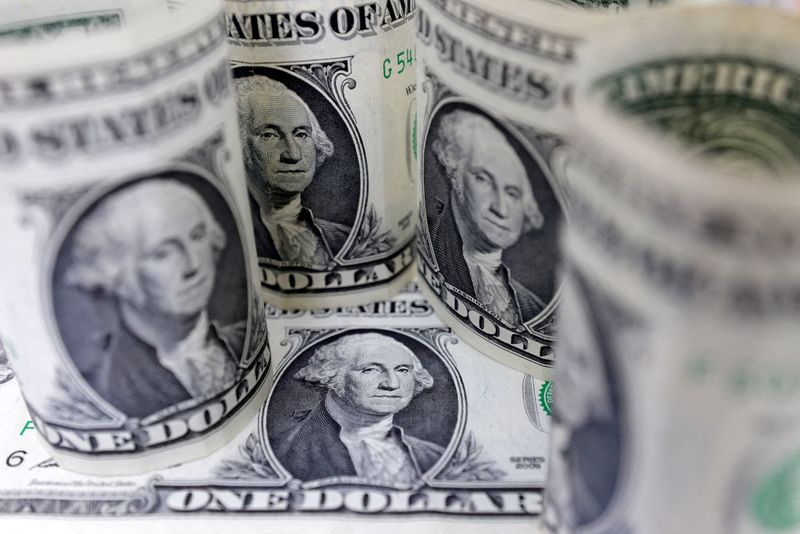 © Reuters. FILE PHOTO: U.S. dollar banknotes are seen in this illustration taken July 17, 2022. REUTERS/Dado Ruvic/Illustration
© Reuters. FILE PHOTO: U.S. dollar banknotes are seen in this illustration taken July 17, 2022. REUTERS/Dado Ruvic/Illustration
By Rae Wee
SINGAPORE (Reuters) - The dollar climbed on Monday as protests against COVID restrictions in China rattled financial markets, sending the yuan sliding and pushing nervous investors toward the safe-haven greenback.
The COVID protests have flared across China and spread to several cities in the wake of a deadly fire in Urumqi in the country's far west, with hundreds of demonstrators and police clashing in Shanghai on Sunday night.
Worries over the unprecedented wave of civil disobedience in a country where in-person protests are rare, the rising COVID cases, as well as how Beijing will react to the situation kept investors on edge.
The offshore yuan fell to an over two-week low in Asian trading, and was last roughly 0.6% lower at 7.24 per dollar.
The Australian dollar, often used as a liquid proxy for the yuan, slid more than 1% to $0.6687. The kiwi slumped 0.65% to $0.62065.
"The pushback from residents that we've been seeing, obviously the rising tensions and protests ... that was something we probably haven't been expecting to that degree," said Chris Weston, head of research at Pepperstone.
"We're really looking at the government response to what's happening ... the government response is so unpredictable, and of course that just means derisking."
The stringent COVID restrictions have taken a heavy toll on China's economy, and authorities have implemented various measures to revive growth. On Friday, the People's Bank of China (PBOC), the nation's central bank, said it would cut the reserve requirement ratio (RRR) for banks by 25 basis points (bps), effective from Dec. 5.
"If the RRR cut is the only monetary policy tool that the PBOC is going to implement, it may not lead to a significant increase in bank lending," said Iris Pang, chief economist for Greater China at ING.
"Companies are currently facing weaker retail sales from a higher number of COVID cases and falling home prices from unfinished home projects."
Elsewhere, the euro fell 0.43% to $1.03575, while sterling was down 0.51% at $1.2027.
The latest developments in China have put a pause on the U.S. dollar's decline, which had been softening over the past few weeks on hopes that the Federal Reserve would soon slow its pace of rate hikes - a view that was supported by the November meeting minutes released last week.
Against a basket of currencies, the U.S. dollar index firmed to 106.34, edging away from its recent three-month low of 105.30.
Fed Chair Jerome Powell is due to speak on the outlook for the U.S. economy and the labour market at a Brookings Institution event on Wednesday, which will likely provide more clues on the U.S. monetary policy outlook.
Market expectations of a less hawkish Fed have helped the Japanese yen gain a footing, said Moh Siong Sim, a currency strategist at Bank of Singapore.
The yen was up about 0.5% to 138.46 per dollar.
"The market is thinking that the Fed downshifts to a 50-basis-point rate hike and perhaps going to a pause next year, and that might limit the upside in U.S. (Treasury) yields. And dollar/yen is probably queuing into that sort of idea."

